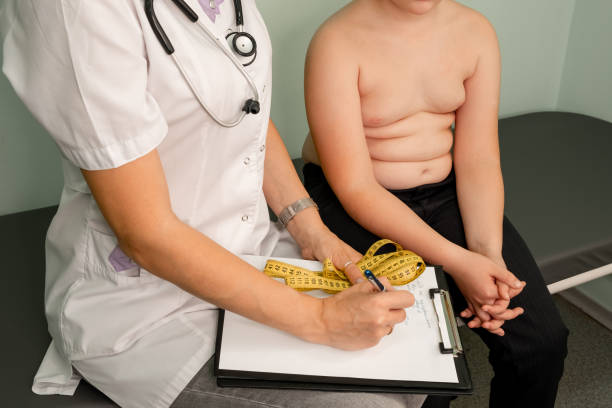Myopia, a condition where distant objects appear blurry, is becoming increasingly prevalent, particularly among young individuals. Myopia in children has emerged as a global public health concern, with its prevalence escalating at an alarming rate among various populations. Managing shortsightedness, or myopia, in children is crucial for their long-term eye health and overall well-being.
Understanding Myopia Progression
Childhood myopia often progresses rapidly during periods of growth. This progression occurs as the eyeball elongates, causing light to focus in front of the retina rather than directly on it. (Pier L.S. et al. 2024) Genetic predisposition plays a significant role, but environmental factors, such as increased screen time and decreased outdoor activity, are also contributing to the rising rates. Recognizing the signs early is essential. These signs include squinting, frequent eye rubbing, headaches, and difficulty seeing distant objects.
Clinical Management of Myopia
Several strategies can effectively manage and slow the progression of myopia in children:
Regular Eye Examinations: Schedule comprehensive eye exams with an ophthalmologist or optometrist at least annually, or more frequently if recommended. These exams allow for early detection and monitoring of myopia progression.
Orthokeratology (Ortho-K): Ortho-K involves wearing specially designed rigid gas permeable contact lenses overnight. These lenses reshape the cornea, providing clear vision during the day without the need for glasses or contact lenses. Studies have shown that Ortho-K can slow myopia progression.
Atropine Eye Drops: Low-dose atropine eye drops can effectively slow myopia progression. These drops work by relaxing the focusing muscle of the eye and are typically used nightly. Regular monitoring by an eye care professional is essential to manage potential side effects. (Simonaviciute D, et al. 2023)
Specialized Spectacle Lenses: Myopia control lenses, such as defocus incorporated multiple segments (DIMS) lenses and highly aspherical lenslets (HAL) lenses, are designed to create peripheral defocus, which can slow eye elongation. These lenses provide clear central vision while managing peripheral vision to reduce the stimulus for myopia progression.
Personal management of myopia in children requires a tailored approach, combining professional guidance with consistent at-home practices. Here’s a breakdown of how parents and children can actively manage myopia:
Importance of Early Intervention
Early intervention is crucial because myopia progression is often most rapid during childhood. Delaying treatment can lead to higher levels of myopia and increase the risk of associated complications, such as:
● Retinal detachment
● Myopic macular degeneration
● Cataracts
● Glaucoma
These complications can severely impact vision and quality of life.
Parental Involvement and Education
Parents play a vital role in managing their child’s myopia. Educating themselves about the condition, its risk factors, and available management strategies is essential. Parents should actively encourage healthy habits, such as outdoor activity and limited screen time, and ensure their child attends regular eye exams.
Establishing Healthy Habits:
● Prioritize Outdoor Time: (Zhang J, et al. 2019)
○ Schedule daily outdoor activities, aiming for at least 90-120 minutes of daylight exposure.
○ Encourage participation in outdoor sports, games, and nature walks.
○ Make outdoor time a family activity to foster a positive association.
● Limit Screen Time:
○ Set clear and consistent screen time limits, especially for close-up activities like gaming and reading on devices.
○ Implement the 20-20-20 rule: every 20 minutes, look at something 20 feet away for 20 seconds.
○ Encourage breaks during homework or reading sessions that involve screens.
○ Set up a good ergonomic workstation, with proper screen distance, and lighting.
● Promote Good Reading Habits:
○ Ensure adequate lighting for reading and close-up work.
○ Encourage proper posture and maintain a comfortable reading distance.
○ Take frequent breaks during reading sessions.
○ Use reading stands, to help with posture.
● Balanced Diet:
○ Incorporate foods rich in vitamins and minerals that support eye health, such as: Vitamin A (carrots, sweet potatoes), Vitamin C (citrus fruits, berries), Vitamin E (nuts, seeds, spinach), Zinc (meat, beans, nuts)
○ Ensure your child drinks plenty of water.
Empowering the Child:
● Responsibility: As your child gets older, gradually involve them in managing their treatment, such as cleaning their contact lenses or administering eye drops.
● Self-Advocacy: Encourage your child to communicate their needs and concerns to their eye doctor and to you.
● Promote self awareness: Help your child to understand the feeling of eye strain, and that they should take breaks when they start to feel it.
● Age-Appropriate Education: Explain myopia and its management in a way that your child can understand.
Creating a Supportive Environment:
Encourage your child’s efforts in managing their myopia. Avoid making them feel self-conscious about their condition. Share information about myopia with other family members to ensure everyone understands the importance of supporting the child’s treatment plan. Incorporate eye-healthy habits into daily routines in a fun and engaging way. For example, turn outdoor activities into games or challenges. Ensure that your child has adequate lighting while doing homework, reading, or any close up work. Poor lighting can cause eye strain.
Moreover, open communication with eye care professionals is vital. Parents should discuss their concerns and ask questions to ensure they understand the recommended treatment plan and follow-up care. By combining professional guidance with consistent at-home practices, parents and children can effectively manage myopia and protect their long-term vision.
References:
Pier L.S., Uday P. P., Rohan B. S., Yeganeh F., Mutali M., Antonino M., Salvatore L.,Fabiana D., Caterina G., & Marco Z. (2024) Myopia in Children: Epidemiology, Genetics, and Emerging Therapies for Treatment and Prevention. 11(12), 1446; https://doi.org/10.3390/children11121446
Simonaviciute D, Grzybowski A, Lanca C, Pang CP, Gelzinis A, Zemaitiene R. The Effectiveness and Tolerability of Atropine Eye Drops for Myopia Control in Non-Asian Regions. J Clin Med. 2023 Mar 16;12(6):2314. doi: 10.3390/jcm12062314. PMID: 36983313; PMCID: PMC10058902.
Zhang J, Deng G. Protective effects of increased outdoor time against myopia: a review. J Int Med Res. 2020 Mar;48(3):300060519893866. doi: 10.1177/0300060519893866. Epub 2019 Dec 19. PMID: 31854216; PMCID: PMC7607527.





